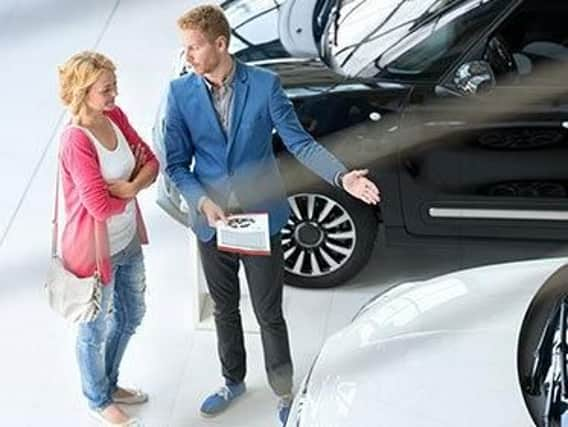Seven things to consider when choosing a new car


Driving experts at LeaseCar.uk have released advice in order to help drivers select vehicles that meet all of their needs and requirements.
If you're new to car buying or haven't made a purchase in many years, it can be hard to know where to begin.
Advertisement
Hide AdAdvertisement
Hide AdThe ‘right’ car depends on who you are, where you live, what you do, and what you expect from a car.
But for those who simply need a vehicle for daily duties, functionality should trump all else.
Tim Alcock from LeaseCar.uk commented: “After a house, a car is probably the second largest purchase you will ever make, so picking the right one is crucial and t here are a few questions you need to ask yourself when choosing a new vehicle.
“How many passengers do you need to carry? What type of driving do you do? Do you have a long commute, and is fuel economy important to you?
Advertisement
Hide AdAdvertisement
Hide Ad“Will you be doing any towing? And how much garage or parking space do you have?
“There’s so many bells and whistles on modern cars, you should also consider what your must-have features are – reverse cameras and Bluetooth compatibility for example – and similarly, what safety features are important to you? Do you want blind-spot monitoring, or automatic emergency braking?
“Taking the time to properly research before you commit to a new car will ensure that your vehicle suits you and your lifestyle.”
1. Budget
First and foremost, you’ll need to set a budget for your vehicle. When it comes to leasing, the general rule is that your monthly new-car payment should not exceed 15 percent of your monthly take-home pay. A used car will be less expensive, but the same rule should apply. If you're looking to lease, aim for a monthly payment that's less than 10 percent of your take-home pay. You'll also want to factor in an additional 7 percent of your monthly income to cover fuel and insurance costs.
2. Usage
Advertisement
Hide AdAdvertisement
Hide AdWhat will you be using the car for? If you live in a city centre and use your car for shopping and commuting, you need to take into account the amount of parking space you’re likely to have access to; you may want something relatively small. Alternatively, if you live in the countryside, you need to think about how bad conditions typically get in your area in winter and whether you’ll need a car that can handle snow and ice – a 4x4 for example.
3. Body style
You’ll need to consider what you regularly carry and what styles of car you actually like. If you’re responsible for the school run, you’ll need space for the kids.
If you’re a dog owner, you’ll need to think about how much space your furry friend needs and whether they’ll be able to jump up and into your boot. If you have elderly relatives or very small children, you might want to consider a car with extra height, making entry easier.
4. Speed/power
You need to think about how fast/powerful you want or need your car to be – but remember that as a general rule, the faster a car is, the less efficient it is. If you need to stick to a strict fuel budget, you might want to think about a slower car that’s more fuel efficient.
Advertisement
Hide AdAdvertisement
Hide AdIf you enjoy fast acceleration, regularly spend time on the motorway, or simply enjoy bragging to your mates, you’ll probably want a faster car. But with great speed comes greater costs – at the pumps, on your insurance, and probably in maintenance too.
5. Fuel efficiency
After deciding on the level of acceleration required, you’ll also need to consider what fuel type if most appropriate. For city dwellers, it’s best to avoid the extra cost of diesel and get the cheaper petrol option. You’ll save money on purchase price and, for short journeys, the difference in fuel cost will be minimal.
Many believe diesel vehicles get the best economy and, to a certain extent, this is true. But in many cases, you have to cover vast mileages annually to make back the extra cost of the car and the fuel over a petrol version.
6. Consider other cars in the class
If you already have a car in mind, you should still review other comparable vehicles in the same class to make sure you haven't overlooked an even better choice. Make sure to directly compare vehicles and their features and specifications.
7. Test drive
Advertisement
Hide AdAdvertisement
Hide AdOnce you’ve found a car that seems like a good fit for you, arrange a test drive. A car might seem to have all the features you want, but the true test takes place when you are in the driver’s seat.
You should test-drive the car the way you would drive it during your everyday life, get in and out of the car several times and be sure to sit in the back seat – especially if you plan on carrying passengers. Check out the boot space and if you use children’s car seats, brings your along to test for fit and ease of installation. Remember to take pictures of the cars so you can reference them later.